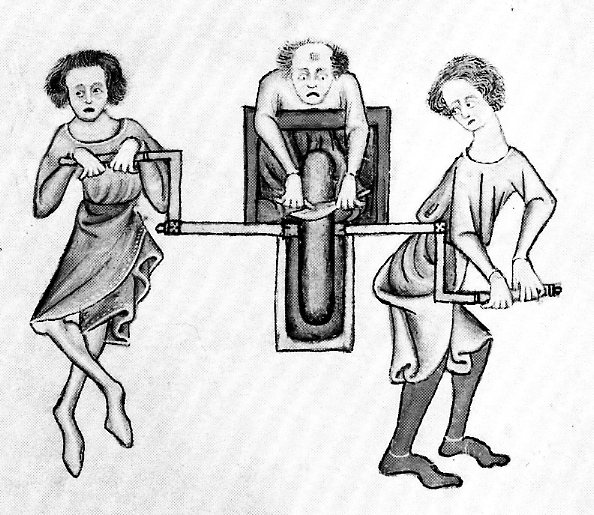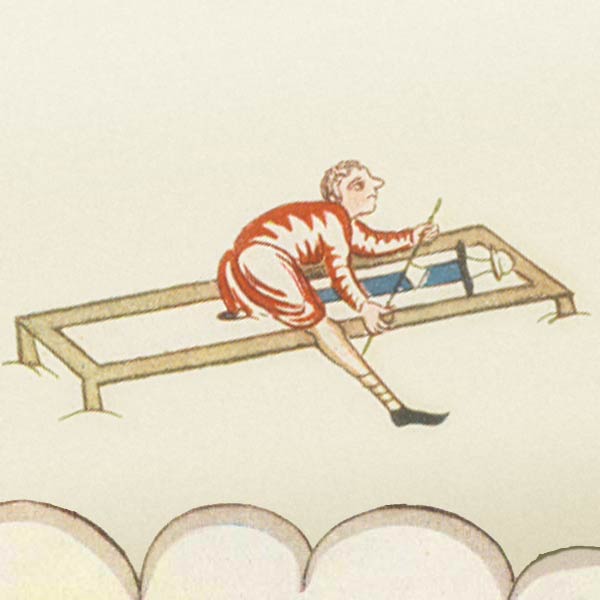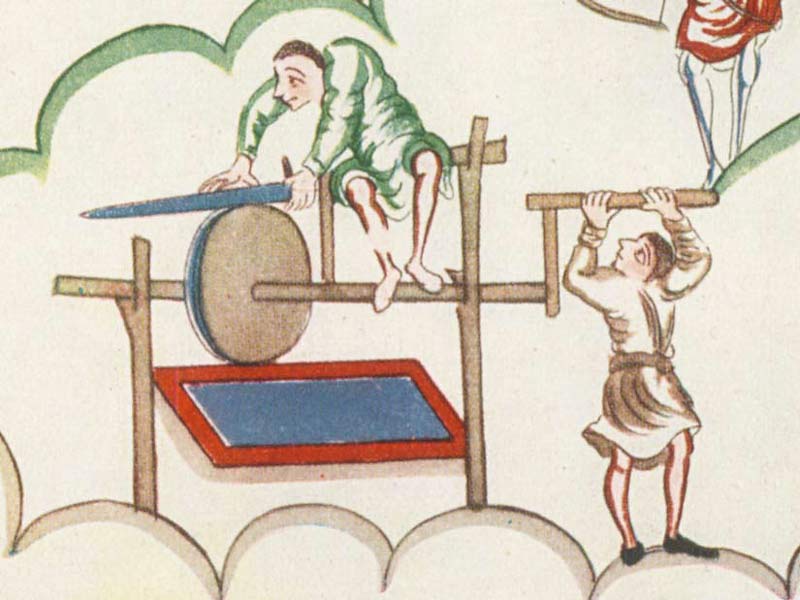Posts: 1,757 Location: Storvreta, Sweden
Fri 19 Dec, 2008 9:02 am
Jeroen, it is a matter of interpretation, naturally.
But I do not think it is radical that a sword should occasionally have to be taken to a stone wheel for re-sharpening. A honing stone will mostly wear on the very edge. It cannot effect the overall geometry of the edge so much. Sometimes honing has gone so far that it has become harmful for the edge geometry. Then a new edge needs to be established. Grinding on a wheel does not have to be a resort only for those cases when there has been nicks in the edge. Just normal wear will result in severe dulling after a while.
I do not think that re-sharpening on a wheel is less probable than that the artist did not know what he was drawing. Rather the opposite perhaps.
We have finds of files and honing stones, but not scrapers or
polishing tools that looks like the tools depicted.
Perhaps it is significant that later medeival pictures showing polishers of armour use a tool with a curved ”edge” and handles, almost like some kind of draw knife. They aso stand over a low bench, much like the one in the Psalter image. Normally they have a small jug of some lubricant and a bag of emery powder handy at their side.
This polishing tool might have been a polished strip of metal, or it may have been a stip of leather fastened to a wooden profile. Perhaps the Psalter shows an early version of the same kind of tool?
Below is an image from the Luttrell psalter, 13th C. Three men are grinding a knife. There is some kind of structure above or on one side of the stone wheel. It might be something similar as was shown on the 8th C Psalter?
That early image is an illustration of the heavenly host preparing for battle, is it not? In that context it might be more reasonable to think they are seeing to weapons in their armoury rather than making new ones?
Just some thoughts. Perhaps a bit too much off topic…
 Attachment: 88.52 KB
Attachment: 88.52 KB



